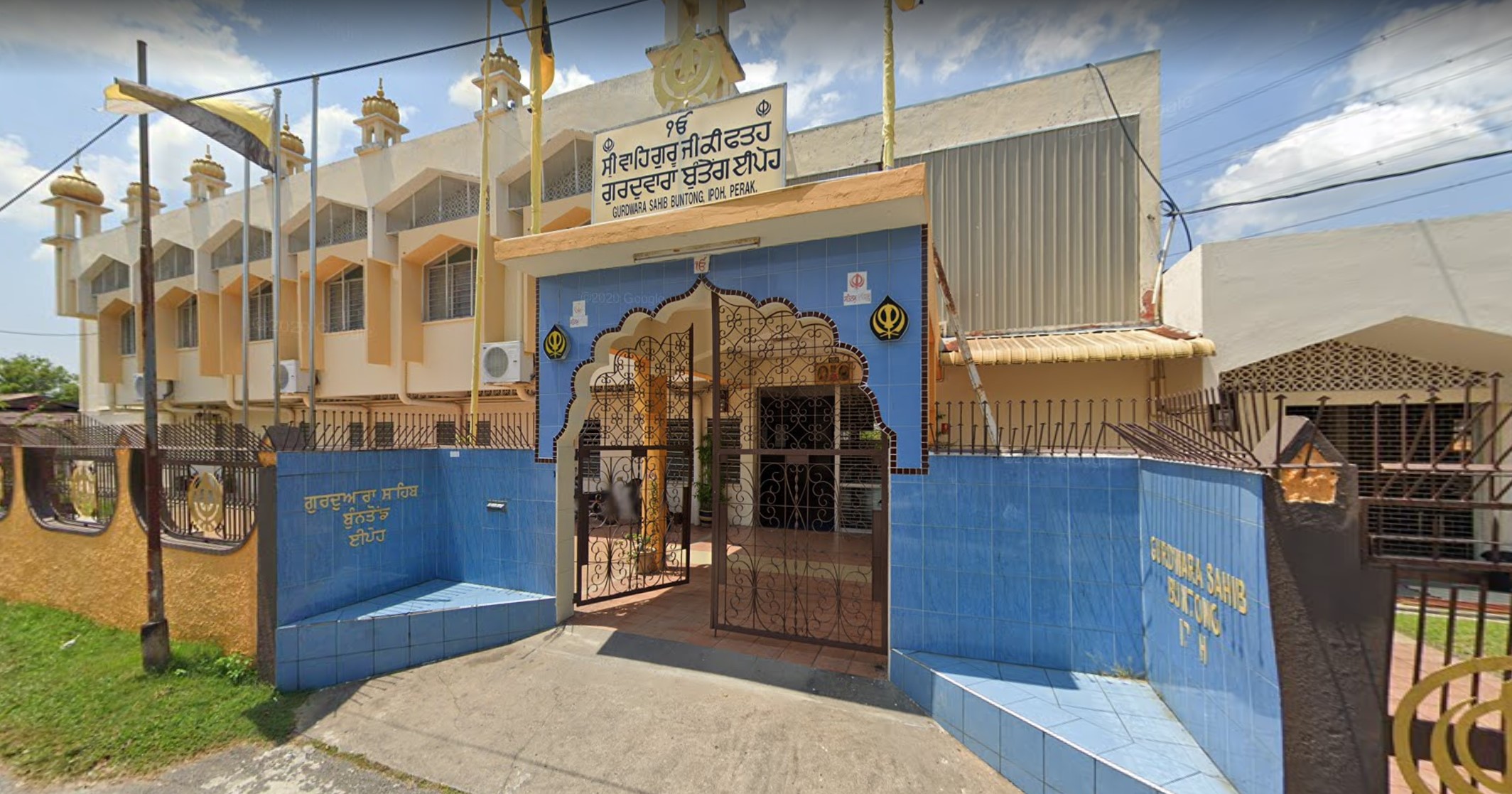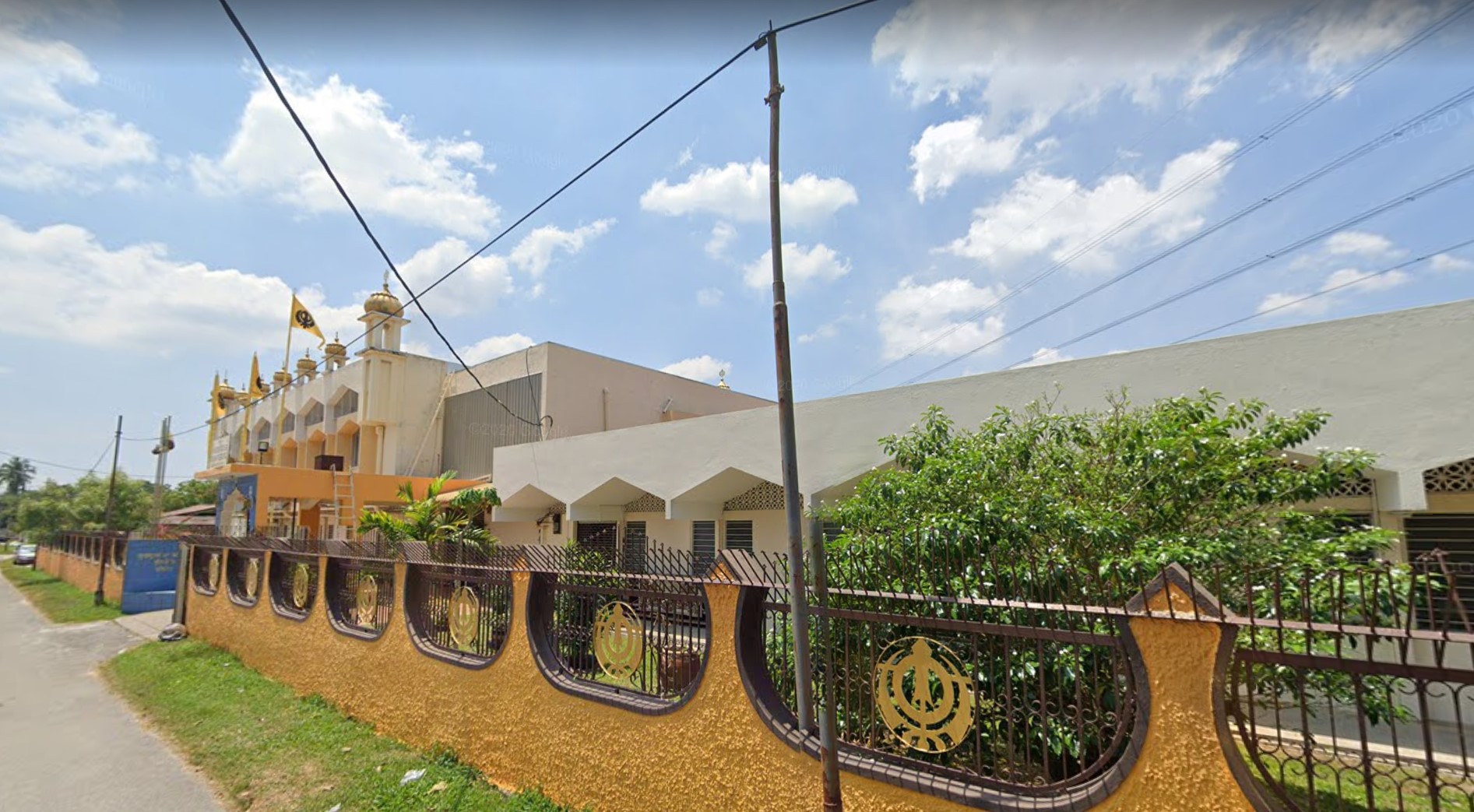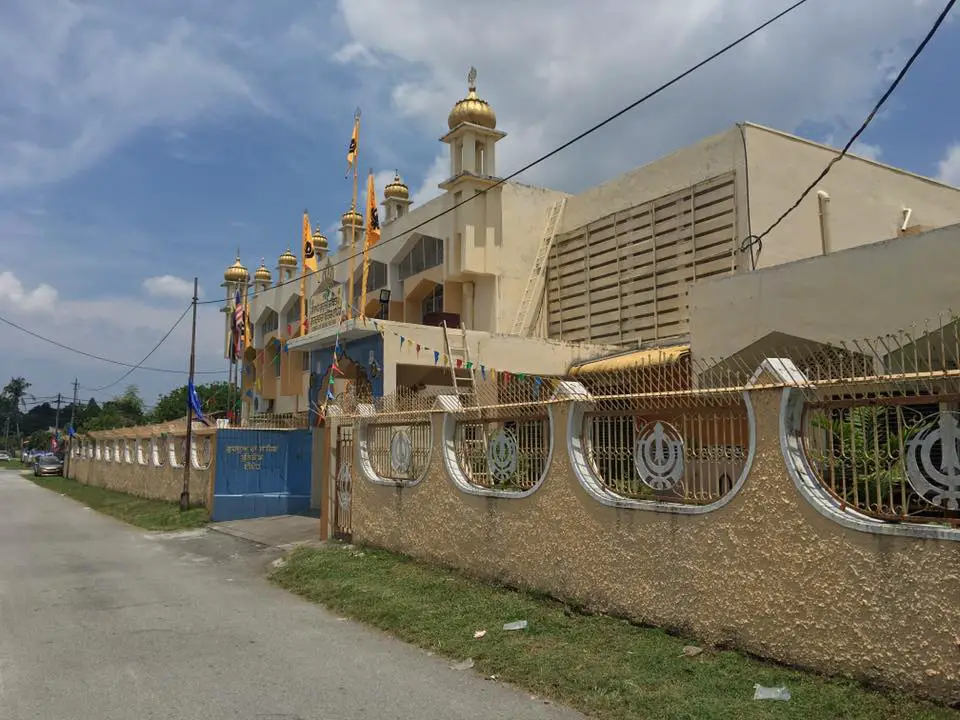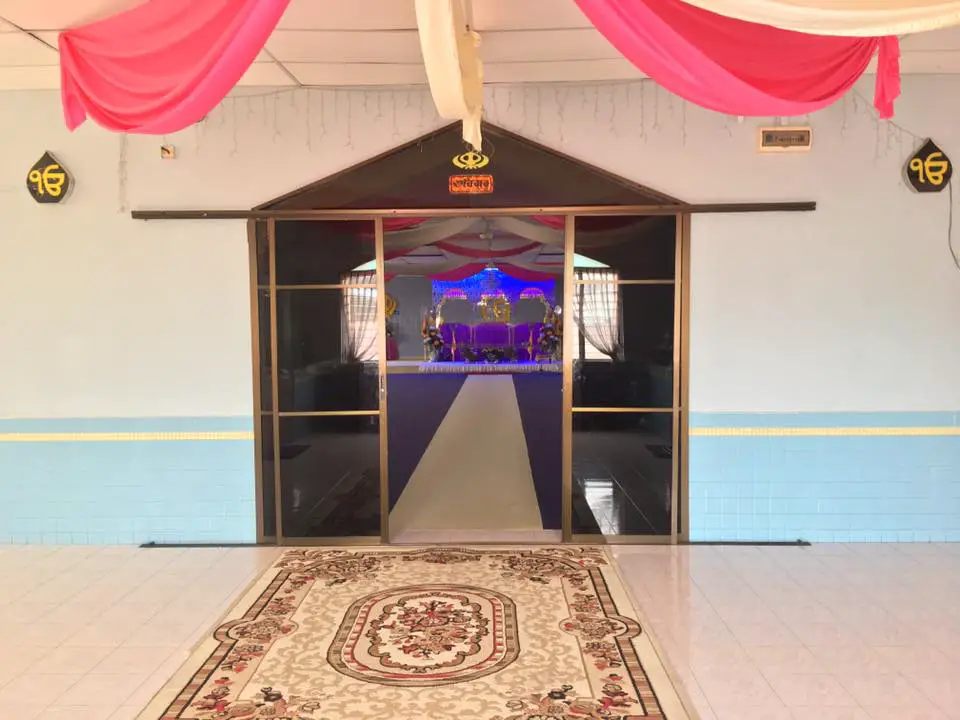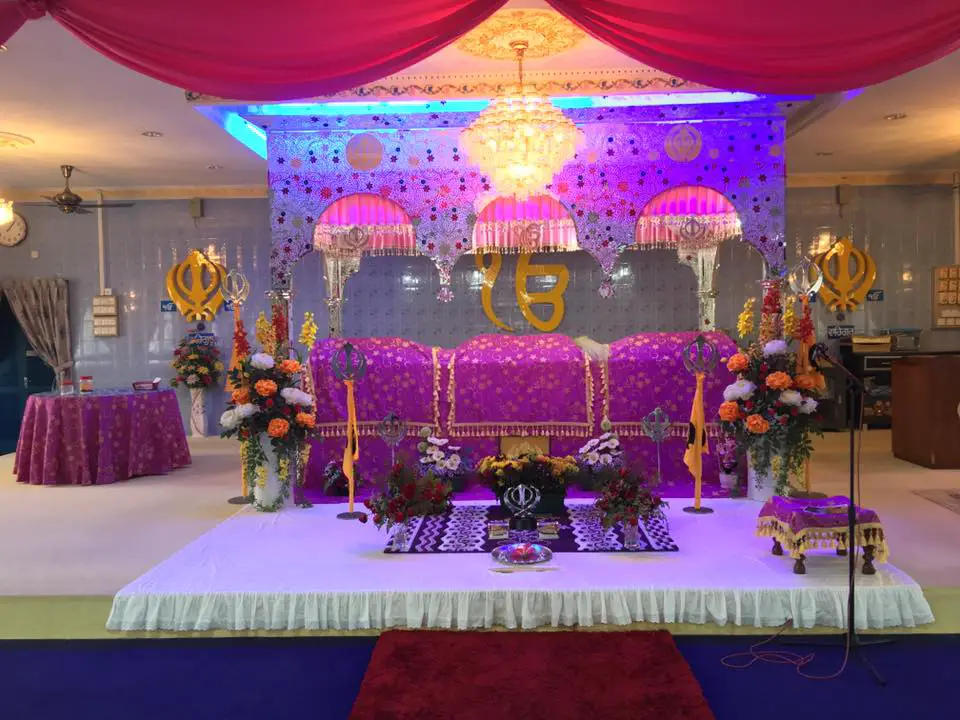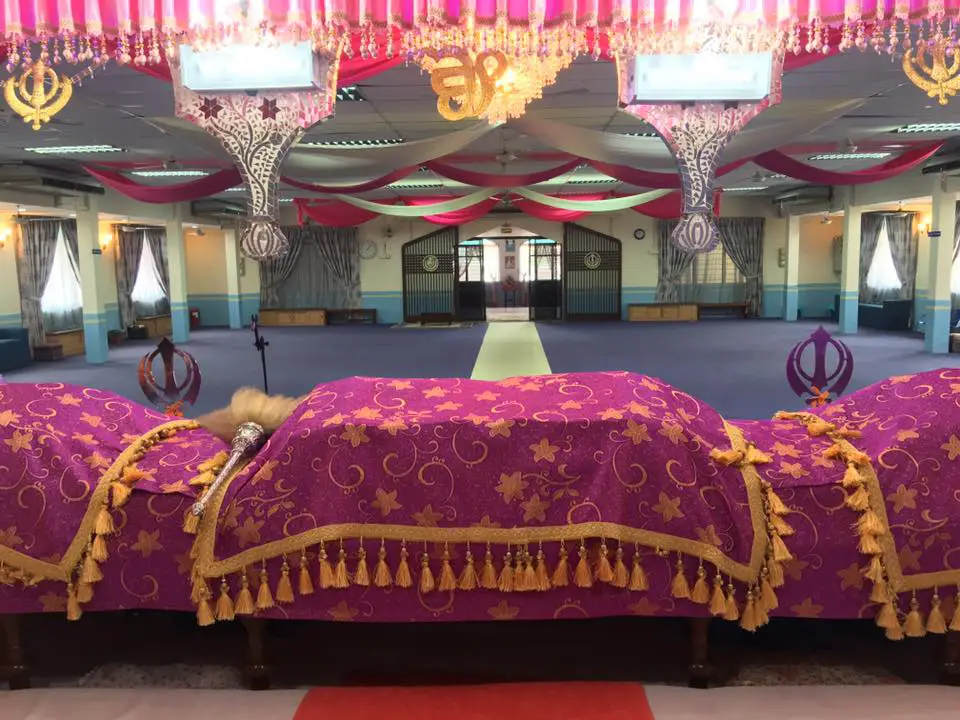Gurudwara Sahib Buntong, Ipoh, Perak
In the early years of the 20′ Century, there were about 60 Sikh families staying around the Buntong area. Most of these Sikhs worked in the various tin mines located nearby or were dairy farmers and bullock cart operators.
In 1908, these Sikhs built a single storey Gurdwara Sahib in the area now known as Telok Kurin, Buntong, Ipoh. The walls of this Gurdwara Sahib were made of wooden planks with an attap roof.
Around 1934, the Sikh sangat built a double storey wooden building in the same location to serve as their Gurdwara Sahib. The first floor was used as the Darbar Sahib while the ground floor was used as the langgar hall and kitchen. The Sikh families used to come to the Gurdwara Sahib by bullock carts, which was the main mode of transportation in those days. It was common to see a few bullock carts in the Gurdwara Sahib compound. Grass was piled up on the ground for the bulls to graze, while their owners prayed in the Gurdwara Sahib.
Around 1951, the Government started to resettle the population into designated new Villages due to the communist emergency. Most of the Sikhs here were resettled in the present Buntong area. These Sikhs built their Gurdwara Sahib in Jalan Bombay. This Gurdwara Sahib was officially declared open on 14th May 1952. This Gurdwara Sahib was a single storey building built of wooden planks with a zinc roof. At that time there were about 80 Sikh families staying in the Buntong area.
In 1968, the Management Committee decided to build a new double storey building as the existing Gurdwara Sahib was too small for the growing Sikh Sangat. The foundation stone of the present Gurdwara Sahib was laid by the then Deputy Prime Minister, Tun Haji Abdul Razak bin Dato Hussein on 3rei April 1969. The Gurdwara Sahib building was completed in 1972. It was officially declared open by HRH Sultan Idris Al Mutawakkil Alallahi Shah, Sultan of the State of Perak on 31st January 1982. The cost of this Gurdwara Sahib came to RM350,000.00 out of which RM50,000.00 was donated by the Government.
From the 1950’s to 1970’s, the Vesakhi jorinela in April was never considered complete without the kabadi games and wrestling. The Sikhs used to come from as far as Tanjong Tuallang, Bidor and Kuala Kangsar, to participite in these events.
The first recorded Granthi of the BuntongGurdwara was Bhai Massa Singh who was appointed on 1″ August 1918 at a salary of Straits Settlements $11.00 a month. About 46 Sikhs are recorded as having given donations for the Degh during the jormela. Donations received ranged from $0.20 to $1.25 (sewa dalar) for the Degh. In those days, it was normal for the donations to be kept by respected members of the Sikh community.
Giani Tara Singh Dhillon, Village Kot Fateh, Bhatinda served as a Granthi in this Gurdwara Sahib from around 1943 to 1947. Bhai Sadhu Singh `Sandhu’ Village Bukanwala, Moga served as a Granthi in this Gurdwara Sahib for nearly 22 years from 1954 to 1976. There are four rooms in this Gurdwara Sahib for the use of Sikh visitors. Prior arrangements have to be made with the President or Secretary if one wishes to stay here for a few days.
The Management Committee comprises of the President, Secretary, Treasurer, their assistants and 10 committee members. There is an Assistant Registrar of Marriages in this Gurdwara Sahib who may be called upon to officiate at Sikh marriages as and when required. The actual marriage ceremony is performed by the Granthi in accordance with Sikh rites.
There are presently about 150 Sikh families who participate in the religious activities in this Gurdwara Sahib.
The normal prayers by the sangat are held twice a week i.e. on Sundays from 6.00a.m. to 7.30a.m and Friday evenings from 7.00p.m. to 8.30p.m. The Isteri Satsang programme is held on Monday afternoons from 3.00p.m. to 5.00p.m. Other religious functions are held as and when necessary at the request of the Sikh sangat.
Courtesy:
Sikh Gurudwaras in Malaysia&Singapore
Saran Singh Sidhu AMN,PNM,FRNS
